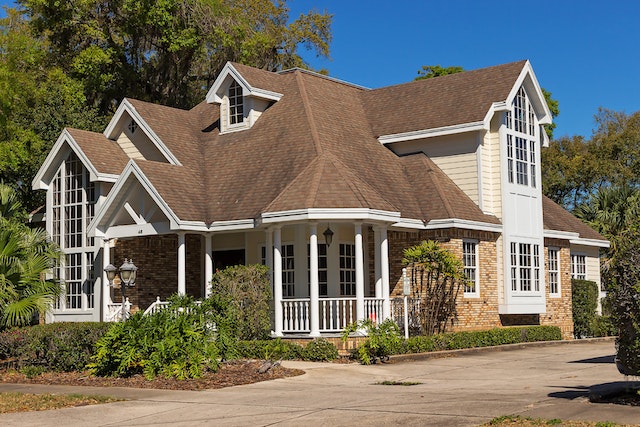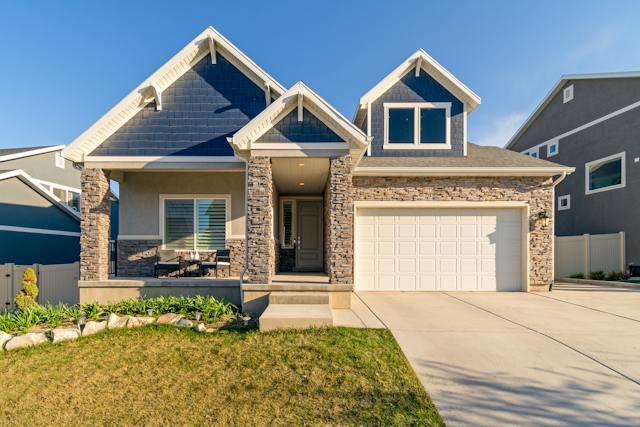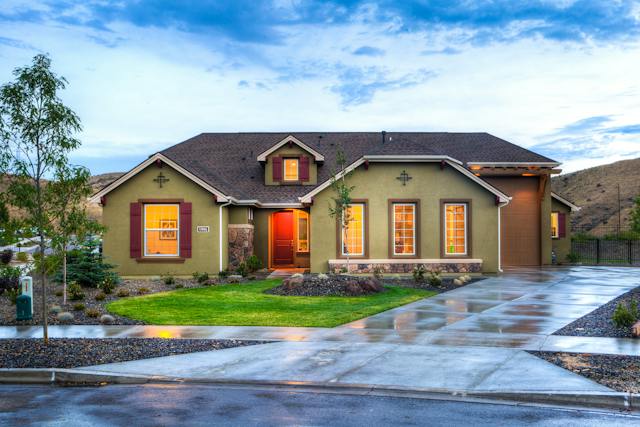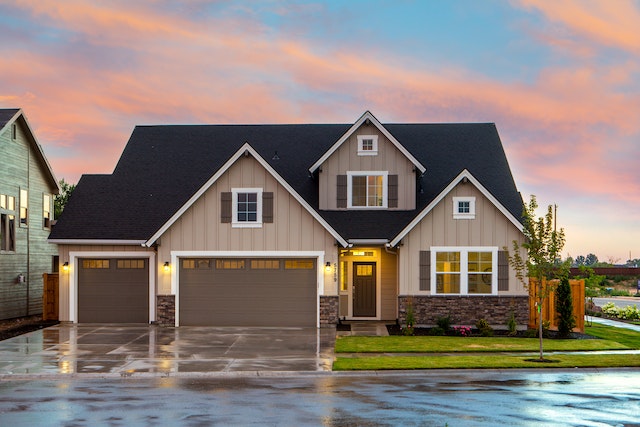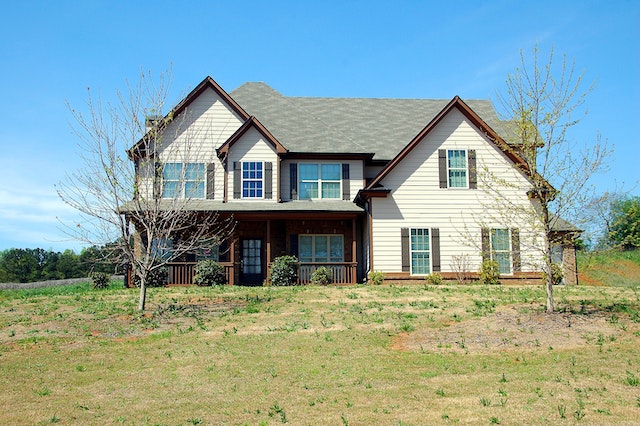Finding the right roofing contractor is crucial for the success of your roofing project. Whether you’re dealing with repairs or a complete replacement, the quality of workmanship and materials will significantly impact the longevity and performance of your roof. It’s essential to conduct thorough research, seek recommendations, and verify credentials before hiring. Look for contractors with proven experience, positive customer reviews, and appropriate licensing. Additionally, obtaining multiple quotes to compare services and prices can be beneficial. Ensure that the contractor you choose offers a warranty and clearly communicates the scope of work, timeline, and cost, providing a comprehensive and transparent approach to your roofing needs.
Research Potential Contractors Thoroughly
Start by gathering a list of potential contractors. Look for local businesses with a solid reputation in the community. Check online reviews and ask for recommendations from friends and family. Remember, a local contractor will be more familiar with regional weather conditions and building codes. Additionally, verify their licensing, insurance, and any professional certifications. It’s also beneficial to look at their previous work, either through a portfolio or case studies. Don’t hesitate to contact their references directly to inquire about their experiences. This thorough vetting process ensures you’re selecting a reliable and skilled roofing contractor who can meet your specific needs effectively.
The Importance of Local Experience
- Understanding Local Weather: Contractors with local experience are better equipped to recommend materials and designs suited to the area’s climate.
- Knowledge of Building Codes: Compliance with local building codes is crucial for your project’s legality and safety.
- Accessibility for Future Services: Choosing a local contractor ensures easier access for any future repairs or maintenance.
Verify Licensing, Insurance, and Certifications
Ensure the contractors you consider are licensed, insured, and hold any necessary certifications. Licensing proves they’re legally permitted to work in your area. Insurance protects you from liability in case of accidents or damage. Certifications can indicate specialized training or a commitment to industry standards.
Key Documents to Request
- Licensing: Ask for their license number and verify it with your local licensing board.
- Insurance: Ensure they have both liability insurance and workers’ compensation.
- Certifications: Look for industry-recognized certifications like those from the National Roofing Contractors Association (NRCA).
Assess Their Experience and Past Work
Experience is a critical factor. An experienced contractor will have a track record you can assess. Ask for a portfolio of their past projects and request references from previous clients. This will give you an insight into their workmanship and customer service.
Evaluating Their Portfolio
- Diversity of Projects: Look for a variety of projects that show their versatility.
- Quality of Workmanship: Pay attention to the details in their work. Neat, precise installations often indicate a high standard of craftsmanship.
- Client Feedback: Direct feedback from past clients can provide valuable insights into their reliability and communication skills.
Discuss Materials and Workmanship Warranties
A reputable contractor should offer warranties both on the materials they use and their workmanship. This offers you peace of mind and protection against future problems.
Understanding Warranties
- Material Warranties: These are typically offered by the manufacturer and cover defects in roofing materials.
- Workmanship Warranties: Provided by the contractor, these cover errors in installation or construction.
Obtain Detailed Estimates and Compare
Get detailed written estimates from each contractor you’re considering. These should include costs for materials, labor, and a timeline for the project. Comparing these estimates will help you understand the market rate and what each contractor offers for their price.
What to Look for in an Estimate
- Itemized Costs: Ensure the estimate breaks down the costs.
- Payment Terms: Understand when and how payments are expected.
- Project Timeline: A clear timeline helps manage expectations and plan accordingly.
Evaluate Communication and Professionalism
The way a contractor communicates can be a good indicator of their professionalism. They should be prompt in their responses, clear in their explanations, and willing to answer your questions. Good communication is essential for a successful project.
Signs of Good Communication
- Responsiveness: Prompt replies to your inquiries show professionalism.
- Clarity: Information should be conveyed clearly and understandably.
- Openness to Questions: A reliable contractor will welcome your questions and address your concerns.
Understand the Contract and Payment Terms
Before signing a contract, ensure you fully understand the terms. Be wary of contractors who demand a large deposit upfront. A staggered payment plan is typical, with a final payment due upon satisfactory completion of the project.
Key Contract Elements
- Detailed Scope of Work: The contract should clearly outline the work to be done.
- Payment Schedule: Understand the milestones for payments.
- Cancellation Policy: Know your rights and responsibilities if either party needs to cancel the contract.
Conclusion: Making an Informed Choice
Choosing a reliable roofing contractor involves careful research and consideration. By following these tips, you can find a contractor who will provide quality work, fair pricing, and a roof that will stand the test of time. It’s important to prioritize communication and transparency throughout the process. A good contractor should be willing to discuss every aspect of the job, from materials to labor costs, and address any concerns you might have. Additionally, look for someone who offers a comprehensive warranty and post-installation support. Making an informed choice will not only secure your investment but also ensure peace of mind knowing that your property is in capable hands.… Read More
A roof leak is every homeowner’s silent adversary, often unnoticed until it wreaks havoc. Unaddressed, it can cause extensive damage to your home, from structural weakening to interior water damage and mold growth. This guide is an essential tool in your home maintenance arsenal, aiming not just to help you identify and fix common roof leaks, but also to empower you with the knowledge and techniques to nip these problems in the bud. By understanding the signs, causes, and effective remedies for roof leaks, you can safeguard your home against potential disasters, ensuring its longevity and peace of mind.
Understanding Roof Leaks
Roof leaks can stem from a myriad of issues, including damaged shingles, improper installation, or a lack of maintenance. These leaks, if left unchecked, can escalate into major structural problems. Recognizing the early signs of a leak is therefore crucial for the health of your home. Keep an eye out for tell-tale signs like water stains on ceilings, mold growth, or dampness in the attic. Additionally, peeling paint, discolored growths on exterior walls, or an unexplained musty odor in certain rooms can also indicate a hidden leak. Staying vigilant about these subtle cues can save you from extensive and expensive repairs in the future.
Regular Roof Inspections
Regular inspections are a cornerstone in the battle against roof leaks. It’s advised to inspect your roof at least twice a year, and importantly, after any major storm, which can cause immediate and severe damage. During these inspections, be thorough in your approach: look for missing, cracked, or curling shingles, damaged flashing, or any signs of wear and tear. Don’t overlook the smaller details, such as loose or exposed nail heads, signs of rust or rot, or granules from shingles accumulating in gutters. These can be early indicators of potential problems. Additionally, checking for blockages in your gutters and downspouts is also vital, as these can lead to water accumulation and damage over time. A proactive inspection routine can be the key to catching issues early and maintaining the integrity of your roof.
Identifying Common Leak Sources
Shingle Damage: Damaged or missing shingles are a common leak source, often the first sign of roof distress. Inspect your shingles regularly, especially after a storm, for any signs of deterioration or wear. Even minor shingle damage can escalate quickly, so prompt attention is essential for prevention.
Flashing: Flashing around chimneys, vents, and skylights is critical and can corrode or become loose over time, leading to leaks. Regularly check and ensure these areas are well-sealed, intact, and in good condition to prevent water intrusion and protect your home.
Gutters and Downspouts: Clogged or damaged gutters can cause water to pool on your roof, leading to leaks. Ensure that gutters and downspouts are kept clean, clear of debris, and in good repair to facilitate proper drainage and prevent water damage.
Valleys: The valleys, critical junctions where two roof planes come together, can collect water and debris, leading to leaks. It’s essential to ensure they are clear of debris, well-maintained, and properly sealed to prevent any water infiltration.
DIY Leak Repairs
Replacing Damaged Shingles: If you find damaged shingles, carefully remove them and replace them with new ones. Ensure they are properly nailed down and sealed, following manufacturer guidelines to maintain roof integrity and prevent future leaks.
Sealing Flashing: If the flashing is the problem, re-seal it with a roofing cement to restore its waterproof barrier. In cases of severe damage, completely replacing the flashing is advisable to ensure long-term protection against water ingress.
Unclogging Gutters: Clean your gutters regularly to prevent blockages, which can lead to serious water damage. Consider installing gutter guards to reduce maintenance and ensure consistent, effective water flow away from your roof.
Sealing Valleys: Apply a layer of roofing cement along the valley to seal any gaps, ensuring a watertight barrier. Before applying the sealant, ensure the valley is clean and free of debris for optimal adhesion and effectiveness.
Preventive Measures
Regular Maintenance: Conducting regular roof maintenance can prevent leaks. This includes cleaning gutters, inspecting shingles, and ensuring proper insulation and ventilation in the attic.
Professional Inspections: While DIY inspections are helpful, having a professional inspect your roof can identify potential issues that might be missed.
Quality Materials: Use high-quality roofing materials. They might be more costly upfront, but they withstand the elements better and last longer.
Proper Installation: Ensure that any roof work is done by qualified professionals. Improper installation can lead to leaks and other issues down the line.
When to Call a Professional
While some roof repairs can be handled as DIY projects, others decidedly require professional attention. If you’re unsure about a repair, if the damage is extensive, or if the roof is steep, high, or otherwise challenging, it’s crucial to prioritize safety and effectiveness by calling in a professional, such as Mona Roofing contractors. Additionally, professionals like Mona Roofing contractors can offer warranties, ensure compliance with building codes, and provide expert assessments that might reveal underlying issues not apparent to the untrained eye.
Conclusion
Preventing and fixing roof leaks is essential for maintaining the integrity and value of your home. Regular inspections, prompt repairs, and preventive maintenance are key strategies that can save you from costly damages in the long run. Proactive care ensures not just a dry and safe home but also peace of mind. Remember, when in doubt, consulting with a roofing professional is always a wise decision. Their expertise can help ensure that your home remains in top condition, safeguarding your investment and your comfort for years to come.… Read More
A roof is one of the most critical components of any home, providing protection from the elements and ensuring the safety and comfort of its occupants. However, roofs are exposed to constant wear and tear, making them susceptible to damage over time. To safeguard homeowners from unexpected repair costs and instill confidence in their roofing system’s quality, roofing warranties play a pivotal role.
In this blog, we will delve into the ins and outs of roofing warranties, shedding light on their various types, coverage, and potential pitfalls. Whether you’re a new homeowner or someone considering a roof replacement, understanding roofing warranties is essential to make informed decisions about your investment.
What is a Roofing Warranty?
A roofing warranty is essentially a contract between the homeowner, the roofing materials manufacturer, or the contractor. It outlines the terms and conditions under which the product or workmanship is guaranteed against defects, faults, or failures for a specified period. These warranties act as insurance, providing financial protection in case of unforeseen issues with your roof.
Components of a Roofing Warranty
Before diving into the types of warranties, it’s crucial to understand the key components that comprise a roofing warranty:
- Coverage Duration: Roofing warranties typically have varying durations, with common periods ranging from 10 to 50 years. The duration may vary depending on the type of warranty and the roofing materials used.
- Scope of Coverage: The scope defines what aspects of the roofing system are protected under the warranty. It can encompass material defects, workmanship issues, and in some cases, even weather-related damage.
- Exclusions and Limitations: Warranties often come with exclusions and limitations, specifying situations or conditions under which the warranty will not apply. These may include acts of nature (such as hurricanes or earthquakes), improper maintenance, or unapproved alterations to the roof.
- Transferability: Some warranties are transferable, which can be passed on to subsequent homeowners if you decide to sell your property. This can add value to your home during a resale.
Manufacturer Warranties
Manufacturers typically provide warranties on their roofing materials. These warranties cover defects in the roofing product and are often tiered based on the materials’ quality. For instance, higher-end materials may come with longer and more comprehensive warranties.
To ensure that the manufacturer’s warranty is valid, it’s essential to register your roof with the manufacturer promptly after installation. This step ensures that you’re notified of any recalls or updates related to the product.
Workmanship Warranties
Unlike manufacturer warranties, roofing contractors offer workmanship warranties and cover the installation and workmanship quality. Workmanship warranties can vary in length and are often provided for a shorter duration compared to manufacturer warranties. They usually range from 1 to 10 years.
Workmanship warranties are crucial because even the best roofing materials can fail prematurely if not installed correctly. These warranties give homeowners peace of mind knowing that the contractor stands behind their work.
Extended Warranties
Some roofing manufacturers or contractors offer extended warranties, additional coverage beyond the standard warranty period. These warranties may come with added benefits, such as extended coverage duration or a more comprehensive scope of protection.
While extended warranties can provide extra assurance, it’s essential to carefully evaluate the terms and conditions to determine if the added cost is worthwhile.
Making the Most of Your Roofing Warranty
To maximize the benefits of your roofing warranty and ensure your roof remains in optimal condition throughout its lifespan, consider the following:
- Proper Roof Maintenance: Regular roof maintenance is crucial to prevent minor issues from escalating into significant problems. Keeping your roof clean and clear of debris and promptly addressing any damage will help maintain warranty coverage.
- Regular Inspections and Documentation: Schedule professional roof inspections at least once a year and record the inspections. This documentation can be valuable in case of a warranty claim.
- Understanding the Claims Process: Familiarize yourself with the steps in making a warranty claim. Follow your warranty guidelines to ensure a smooth and successful process.
Common Pitfalls and How to Avoid Them
While roofing warranties provide valuable protection, there are some common pitfalls to be aware of:
- Misunderstanding Coverage Terms: Thoroughly read and understand the terms and conditions of your warranty. Awareness of what’s covered and what’s not can prevent frustrations.
- Neglecting Maintenance Responsibilities: Failing to perform regular roof maintenance can void your warranty. Make sure to fulfill your maintenance responsibilities as outlined in the warranty documentation.
- Using Unauthorized Contractors: If repairs or replacements are needed, always hire authorized contractors recommended by the manufacturer or contractor to avoid potential warranty issues.
- Failure to Register the Warranty: Neglecting to register your warranty with the manufacturer or contractor can lead to difficulties in claiming coverage later.
Conclusion
Roofing warranties are an integral aspect of ensuring the longevity and durability of your roof. Understanding the types of warranties, their coverage and potential pitfalls empowers homeowners to make informed decisions about their roofing investment.
By carefully selecting reputable roofing materials and contractors, maintaining the roof regularly, and abiding by the warranty terms, homeowners can enjoy the peace of mind that a robust roofing warranty protects their homes. Ultimately, a well-maintained and properly warranted roof provides shelter and a sense of security for you and your loved ones.… Read More
Choosing the right roofing material is one of the most critical decisions homeowners face when protecting their homes. The roof adds to the overall aesthetic appeal and plays a crucial role in safeguarding the structure from external elements. With many roofing materials available today, making the right choice can be overwhelming. In this comprehensive guide (compiled with help from a local Colorado roofing company), we will walk you through the various types of roofing materials, their advantages, disadvantages, installation, and maintenance considerations to help you make an informed decision for your home.
Asphalt Shingles
Asphalt shingles are North America’s most common roofing material due to their affordability and ease of installation. They come in two main types: 3-tab shingles and architectural shingles. 3-tab shingles are more budget-friendly and flat, while architectural shingles offer a more dimensional look. The benefits of asphalt shingles include their versatility, wide range of colors, and relatively low maintenance requirements. However, they may have a shorter lifespan than other roofing materials, and extreme weather conditions can impact their durability. Regular inspections and prompt repairs are essential to prolong their longevity.
Metal Roofing
Metal roofing has been gaining popularity recently due to its durability and eco-friendliness. Common materials used for metal roofing include steel, aluminum, and copper. Metal roofs are known for resisting fire, rot, and insect damage, making them an excellent option for areas prone to wildfires and harsh weather conditions. Moreover, their reflective properties can improve energy efficiency and reduce cooling costs during hot summers. Although metal roofing can be more expensive initially, the long-term savings and extended lifespan often make them cost-effective.
Clay and Concrete Tiles
Clay and concrete tiles are popular for their elegant appearance and ability to withstand extreme weather conditions. They are commonly found in Mediterranean and Spanish-style architecture. These tiles provide excellent insulation, keeping the house cool in hot climates. However, their weight is a crucial consideration, as some homes may require additional structural support to accommodate the load. Proper installation is essential to prevent leaks and damage. Regular maintenance, such as clearing debris from the tiles’ surface, is vital to ensure they protect the home effectively.
Wood Shingles and Shakes
Wood shingles and shakes offer a timeless and rustic charm to a home. They are often made from cedar, redwood, or pine, and their natural beauty adds character to any property. Wood roofing materials are biodegradable and environmentally friendly. However, they require regular maintenance, including staining or treating the wood to prevent decay and insect infestations. Wood roofing may be unsuitable for areas with high humidity or a risk of wildfires. When properly cared for, wood shingles and shakes can last several decades.
Slate Roofing
Slate roofing is a top-notch choice for homeowners seeking unparalleled elegance and longevity. Natural slate is a durable and fire-resistant material that can last well over a century. It offers a distinctive appearance and is available in various colors and textures. However, the high cost of slate roofing and its heavy weight necessitates professional installation and potential reinforcement of the roof’s structure. Careful handling is crucial during installation to prevent breakage. While the initial investment is substantial, the long-lasting beauty and minimal maintenance make slate roofing worthwhile.
Synthetic Roofing Materials
In recent years, technological advancements have led to the emergence of synthetic roofing materials, including rubber, plastic, and composite options. These materials aim to mimic the appearance of traditional roofing materials while offering enhanced durability and cost-effectiveness. Synthetic roofing materials are often lightweight, making them suitable for various structures. They also resist mold, mildew, and insects, contributing to a longer lifespan. However, the quality and performance of synthetic roofing materials can vary, so it’s crucial to choose reputable brands and consult with roofing professionals to ensure a reliable and durable product.
Green Roofing Systems
Green roofing systems are an innovative and environmentally conscious option for eco-friendly homeowners. These roofs incorporate living plants and vegetation, providing numerous benefits such as improved insulation, reduced stormwater runoff, and enhanced air quality. Green roofs can also extend their lifespan by protecting them from UV rays and extreme temperatures. However, installing a green roof requires specialized expertise and additional structural considerations due to the added weight of the vegetation and soil. Regular maintenance, such as irrigation and pruning, is necessary to ensure the health and vitality of the green roof.
Factors Affecting Roofing Material Selection
Selecting the right roofing material involves considering various factors to ensure it meets the specific needs of your home and location. Climate and weather conditions play a significant role in determining the appropriate roofing material, as certain materials may perform better in particular environments. Additionally, your home’s architectural style should be considered to maintain its visual harmony. Budget constraints and the overall cost of installation and maintenance should also be weighed against the long-term benefits and lifespan of the roofing material. Finally, being environmentally conscious may influence your decision, leading you to opt for sustainable and eco-friendly roofing options.
Hiring a Roofing Contractor
Once you have chosen the ideal roofing material for your home, hiring a reputable and experienced contractor is crucial to ensuring a successful installation. When selecting a contractor, checking their credentials, references, and previous work is essential. Ask about warranties and guarantees, as these provide additional protection for your investment. A professional contractor should be able to answer any questions you may have, offer guidance on maintenance, and provide a clear and detailed estimate for the project.
Conclusion
In conclusion, choosing a roofing material is a significant decision that should not be taken lightly. Each type of roofing material offers its advantages and disadvantages, and considering various factors will help you make the best decision for your home. Whether you prioritize durability, aesthetics, sustainability, or cost-effectiveness, there is a roofing material that will suit your needs. By understanding the characteristics of each material and working with a reliable roofing contractor, you can ensure a roof that not only enhances your home’s curb appeal but also protects it for years to come.… Read More
